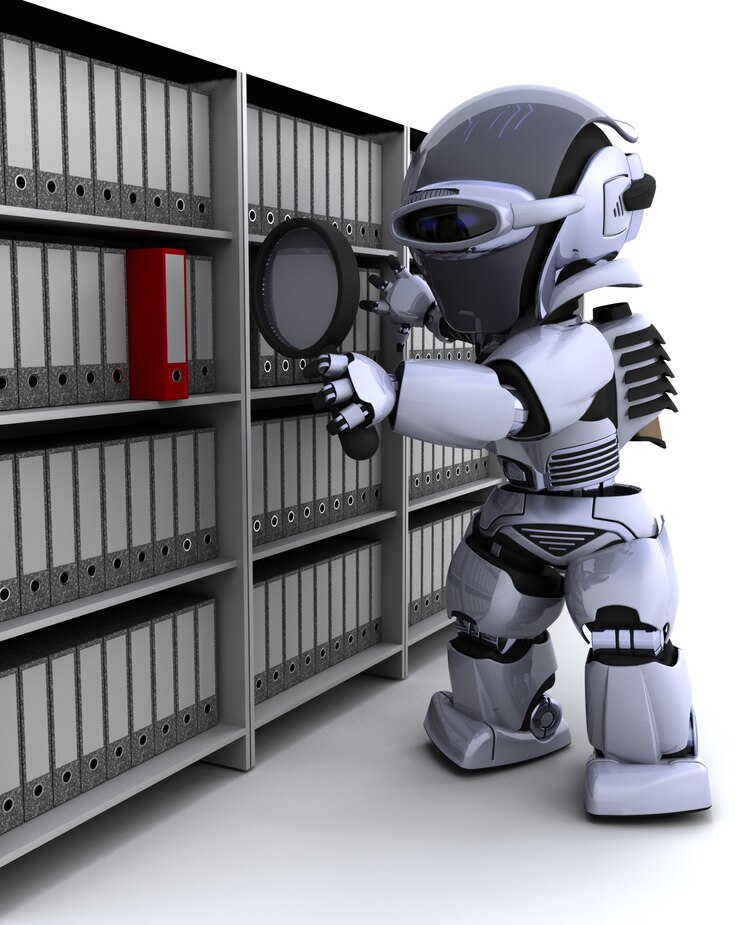Let’s dive deeper in automation and artificial intelligence (AI). In this article I explain how these technologies work and when to use them. By now, you should have defined your problem. From there, all you have to do is choose the right technology, or combination of technologies.
Automation (via algorithms or RPA)

Robotic process automation (RPA) relies on software that mimics human actions on digital interfaces. Algorithms, on the other hand, are instructions programmed to perform specific tasks.
Both techniques are used to automate simple and repetitive tasks. The robot follows a defined process. The main advantages are speed and precision: the robot does not get tired and always does exactly what it is told to do. Since it takes time to program them and make them effective, they need a large volume to be profitable.
Some examples of automation
- Data entry : Admit that a robot is better than us at copying information from an old system to a new one.
- File manipulation: you may be familiar with the famous “night batches”, when the system transforms your Excel file into a csv and then imports it into your ERP.
- Process management : Notifications you receive when your bank statement is available, your client has signed your proposal, hasn’t paid their invoice on time, or you’re behind schedule on one of your tasks.
- Information collection : The robot collects information from different systems or the Internet and then copies it into the form or system. APIs facilitate these data transfers.
To learn more about RPA, see my article: Robots to save processes efficiency.
Deep Learning (Analytical AI)

Deep learning, or analytical AI, uses artificial neural networks to analyze large amounts of data and identify complex patterns. Unlike robots that use simple algorithms to run processes, models analyze large amounts of data. Their focus is on data.
It is used to:
- Error detection: by comparing each situation to the group, AI identifies anomalies in insurance underwriting, the over- or under-performance of an individual in a call center or a product in a company.
- Trend analysis : By comparing the distant and near past, plus a whole bunch of other data, AI predicts next month’s sales volume, adjusts production or marketing campaigns.
- Computer security: All your purchases are made within a radius of 50km or you never buy online? The bank will immediately blocks these suspicious transactions because they do not correspond to your usual behavior. In the same way, EDRs (modern antivirus) block unexpected or unusual connections. In addition to recognizing viruses according to a database, they monitor “behavior” and traffic on the network.
Generative AI or Gen AI (Production of texts, images or sounds)

Generative AI is used to produce original content such as text, images, videos, and sounds from existing data. These templates can create original works by mimicking specific styles and formats. They use instructions to produce a result.
How to use it?
- Content creation : No more blank page syndrome, AI provides you with a first version, based on your instructions. You can specify other instructions or work from what it produces.
- Personal productivity : Whether it’s sorting your messages, writing draft responses, correcting your style, or writing correctly what comes out of your brain, AI is available 24/7. You already knew about predictive writing on your phone, it does more by adding your appointments to your calendar for example. You can think of her as your intern or personal assistant. Learn how to use it properly in this article.
- Personalized teaching: AI can explain a technical term, a paragraph, or find tutorials for you and listthe steps to follow. The level of detail and complexity adjusts to your requests. No more searching for hours, it explains according to your context!
Magic combo power 3000!

Obviously, you can imagine that the combination of these tools multiplies their impact (as well as their cost of implementation). Generative AI, with its language model, simplifies interaction with the machine. It feels like talking to a human. Analytical AI can analyze exceptions in a process and support the implementation of more complex automations.
However, as explained in my previous article, there are many solutions available on the market. Start by understanding the problem you want to solve. Then you will find the right solution.
© Images: kjpargeter
